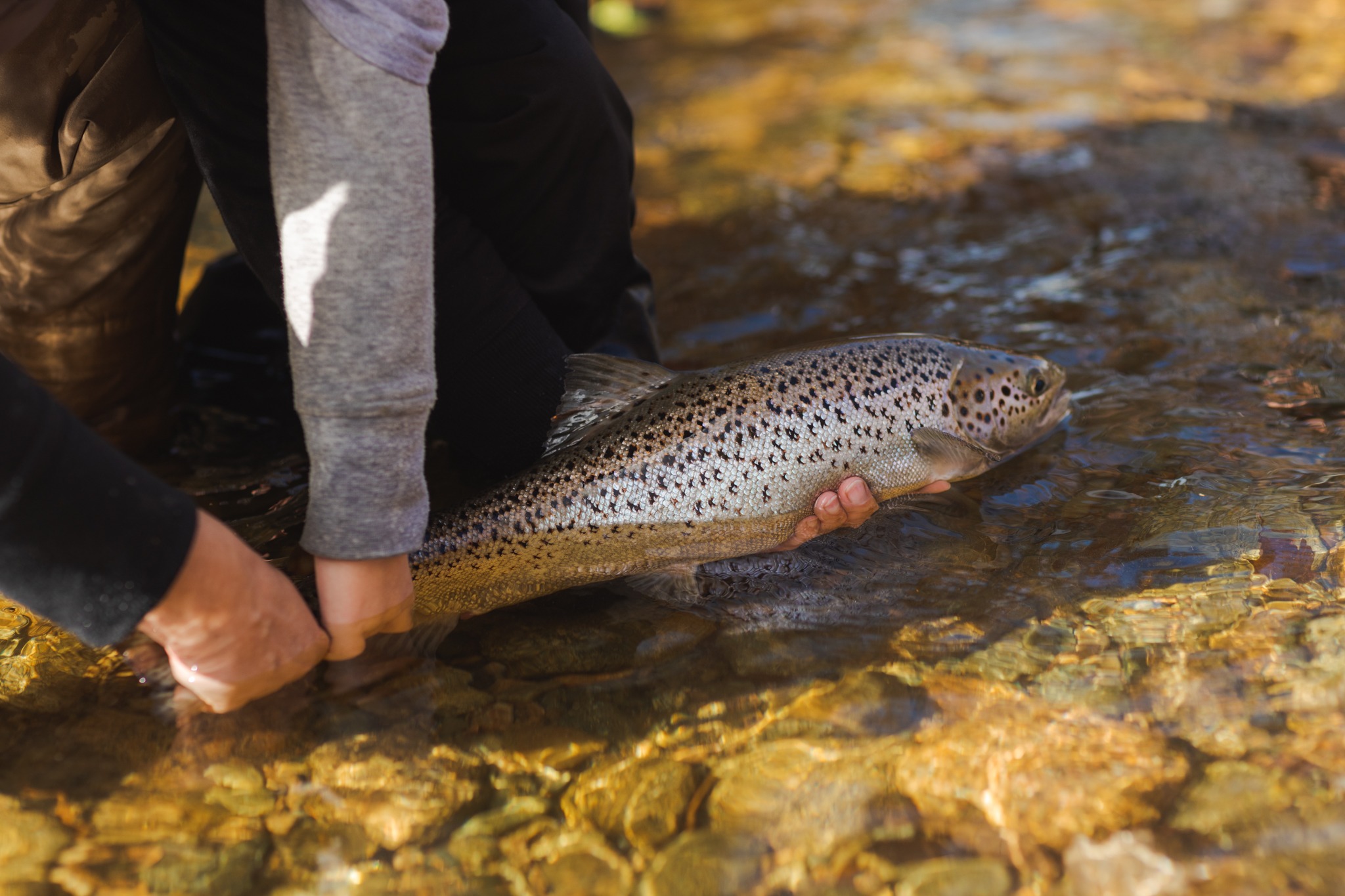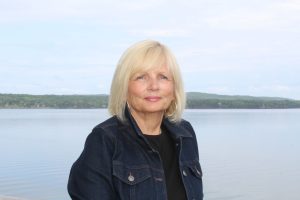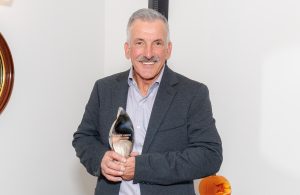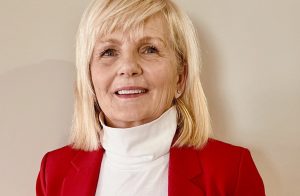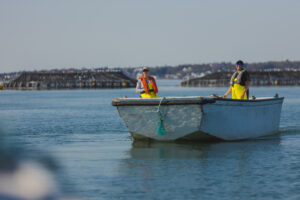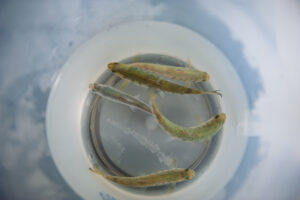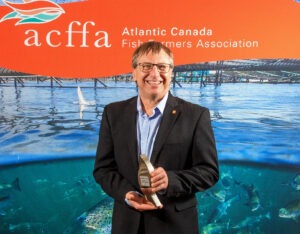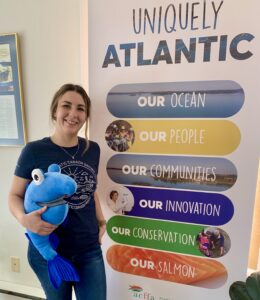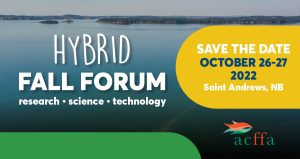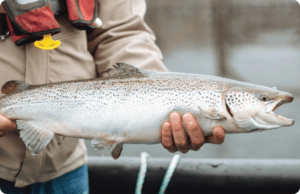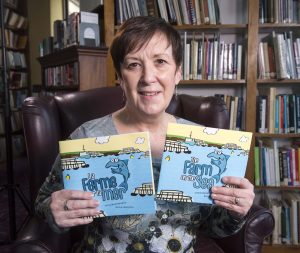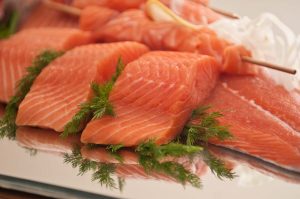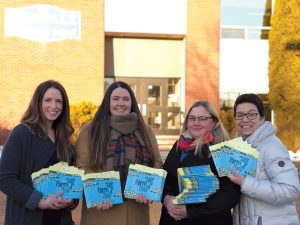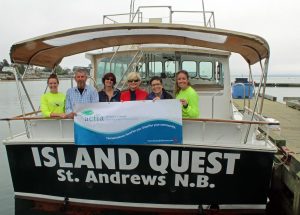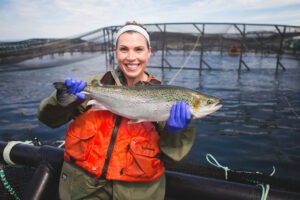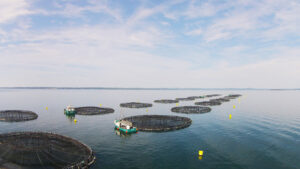It’s a remarkable reminder of the fact that conservationists, researchers, governments and salmon farmers have a long history of working together. In fact, salmon farming started as the result of lessons learned in wild Atlantic salmon rehabilitation. Atlantic salmon were already on the decline in the mid-1980s when the Atlantic Salmon Federation, the research community and budding salmon farmers began working together to find a way to preserve the species.
No one questions the need to preserve this iconic “King of Fish” that is recognized by scientists as well as First Nations as a keystone species, important to the overall marine and freshwater ecology. Endeared for cultural, spiritual and environmental reasons, the Atlantic salmon is revered by fly fishermen – including my husband – who wait every year to see if they can access a license to visit their favorite river to partake in the recreational catch and release of nearly 200,000 (2017) fish in the North Atlantic area.
Some like to point the finger at salmon farming; but, the fact is no one really knows why there has been a continual decline of the Atlantic Salmon in most if not all of their native countries. The Cohen Commission was focused on the West coast and Sockeye salmon (http://www.farmfreshsalmon.org/sites/default/files/Volume%202%20CP32-93-2012-2-eng.pdf); however, it was touted as being transferrable to Atlantic Salmon in its evaluation of impacts. This report listed more than 20 activities affecting salmon, including climate change (marine and fresh water), loss of habitat, predators, non-point sources of contaminants, forestry, and cumulative effects. Yet, salmon aquaculture is often held up as the big threat with some arguing that if all salmon farms were just moved to land we’d see Atlantic salmon recovery. It’s human nature to aim for low hanging fruit when trying to tackle a problem that we care deeply about, but that approach never solves anything, and salmon farming is not to blame for the decline of wild salmon.
The fact is climate change is real and because it is considered a “super wicked problem” it defies resolution because of the enormous interdependencies, uncertainties, circularities, and conflicting stakeholders implicated by any effort to develop a solution (http://www.lawschool.cornell.edu/research/cornell-law-review/upload/Lazarus.pdf). The decline of Atlantic salmon is also a “super wicked problem” without a simple solution.
Everyone operating in our marine or freshwater environments is guilty of leaving a footprint. Compared to most other activities, aquaculture leaves a relatively small footprint as we see in this recent independent study (https://www.zmescience.com/science/animal-protein-cost-119727/). Even so, aquaculture is continually improving. Our farmers are investing millions to reduce the fish time in the marine environment, to implement non-chemical treatment of sea lice and to develop new infeed and vaccine alternatives to raise healthy fish. They are also investing time and resources to support the recovery of wild Atlantic Salmon recovery in the inner Bay of Fundy, home to one of the most endangered salmon species in eastern North America.
The Fundy Salmon Recovery project is an excellent example of wild Atlantic Salmon recovery that is working. That success would not be possible without the aquaculture industry working collaboratively with all levels of government, scientists and community stakeholders who understand the interdependencies that must be acknowledged especially when you are attempting single species conservation. (http://www.fundysalmonrecovery.com/farm-to-river-virtual-tour/).
Last year that project put nearly 1000 mature wild salmon back in the rivers of Fundy National Park and the Petitcodiac River system, and so far in 2018, more that 1900 wild and wild- exposed smolt have been transferred to the Wild Salmon Marine Conservation site owned by the Grand Manan Municipal Council and operated by Cooke Aquaculture to live out their marine exposure protected from predators and poachers. They too will go back into the rivers and the process of wild stock population growth will continue on those rivers. This important work to help preserve this species is working because it’s a respectful and collaborative partnership between diverse groups that have the shared goal of restoring wild salmon stocks. It is an excellent example of how scientists, conservationists, salmon farmers, First Nations and governments can use their combined expertise to have an impact on the recovery of an important species of fish that might not be possible otherwise.
I often look at that picture in my office and think about the opportunities for collaboration to help us solve the “super wicked problem” of Atlantic salmon decline. Aquaculture is a crucial and sustainable way to help supply the world’s food needs and also to help reduce the pressure on wild stocks. Salmon farmers are committed to making a difference in wild salmon conservation – and they want to work with any group that shares that goal. My door is always open!
